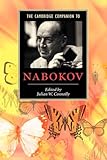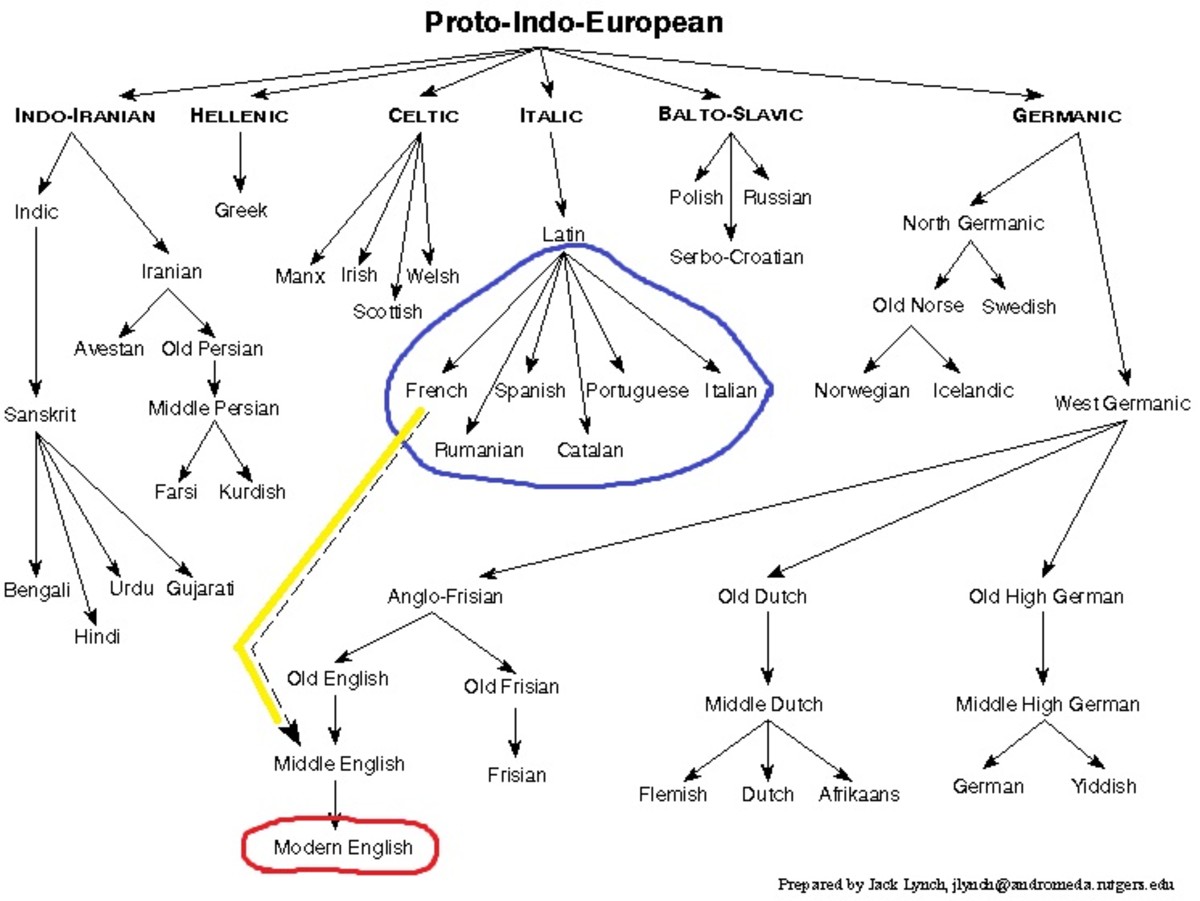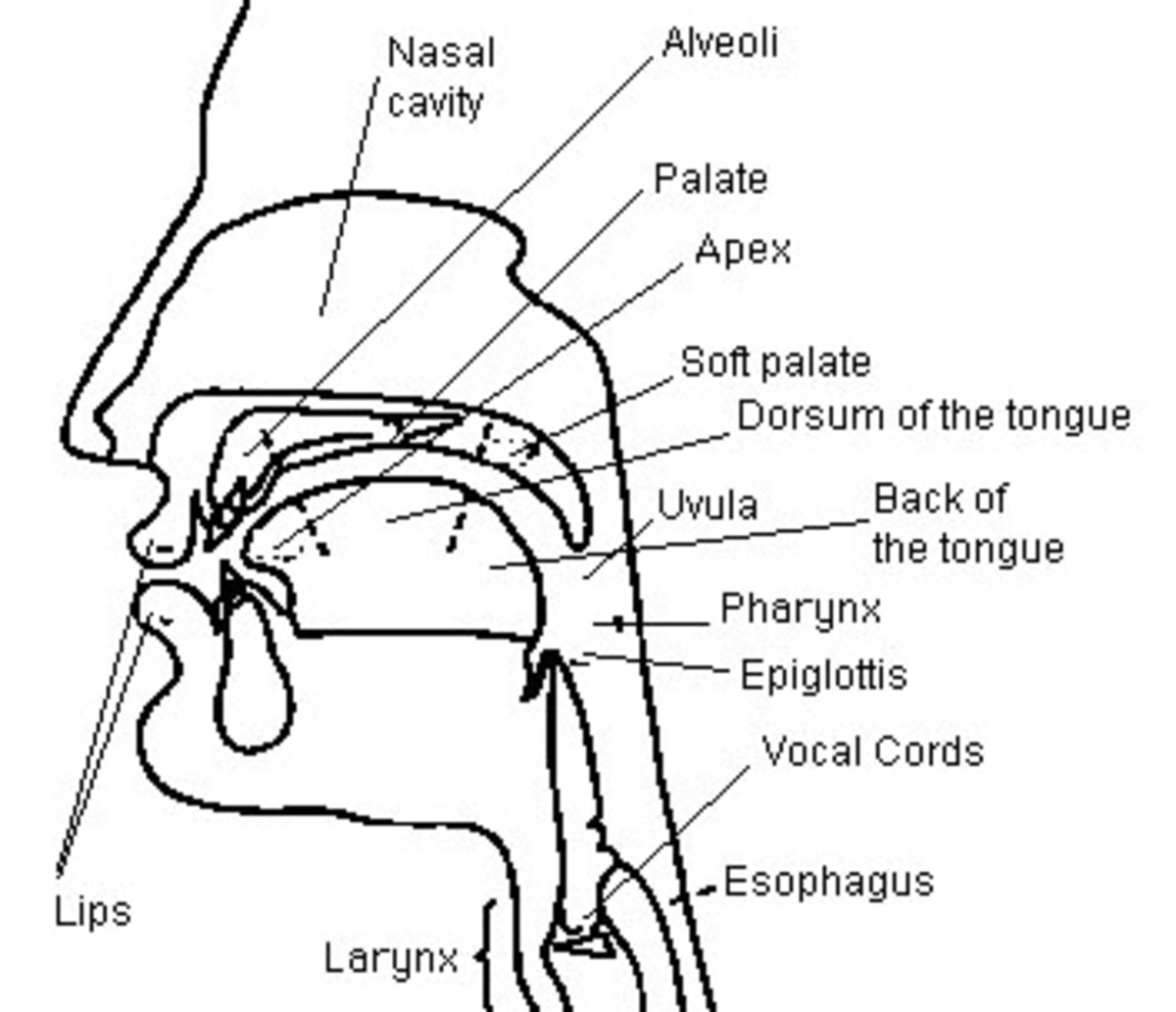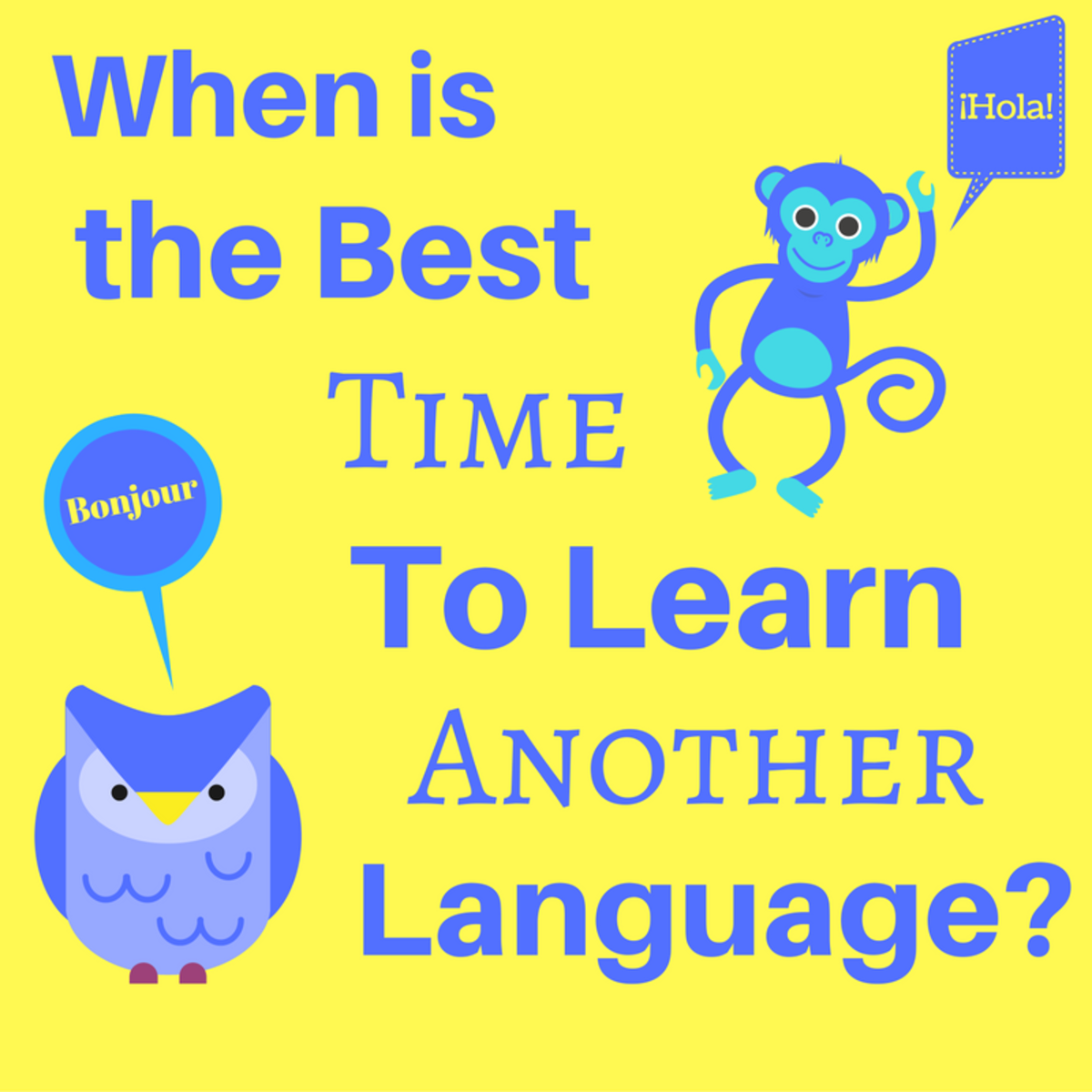Language in the Classroom - Native Students and Potential Problems with Learning - Speaking Correctly
A Critical Review of the Article “Why Do They Get It When I Say “Gingivitis” But Not When I Say “Gum Swelling”?” by Bruce Maylath
The article “Why Do They Get It When I Say “Gingivitis” But Not When I Say “Gum Swelling”?” explores how a student’s native language affects their understanding of Anglo-Saxon and Greco-Latinate words in English. Author Bruce Maylath is an assistant professor of English at the University of Memphis and also teaches in the Professional and Technical Writing Program (37). To his credit, he has taught ESL in Michigan and English as a Foreign Language in Norway (Maylath 37). The purpose of this article is to explain which words students may have trouble with depending on their native language, and offer advice to teachers on how to help students who natively speak either languages derived from Anglo-Saxon or Greco-Latinate elements. It is important to mention that Germanic languages derive from Anglo-Saxon while Romance languages are derived from Latin. English is a combination of Anglo-Saxon and Greco-Latinate elements, but the common vocabulary of English is mainly Germanic.
In this article Maylath suggests that students who speak a Romance language have an easier time with words of Latin roots than do students who speak Germanic languages or English. This is due to the fact that Romance languages are derived from Latin and English and Germanic speakers may not have become familiar with Latin based words. However, these foreign students who speak a Romance language may have trouble with many Germanic words which native English speakers do not, because English is composed of many Germanic based words which speakers of a Romance language may not have been exposed to. Therefore there is the problem that native English-speaking teachers may not communicate effectively with native speakers of Romance languages.
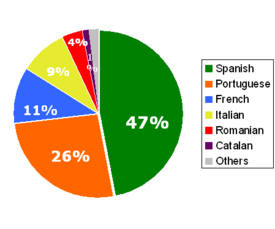
I found this article to be very interesting since I am a native English speaker and helpful since it identified the reasons why I may have trouble with certain words and gave helpful advice on what to do if I am having trouble. I think many times that the first step to fixing a problem is that you have to completely understand it, and therefore I found this article very useful. Though the article is written from the perspective ofProfessorMaylath and the intended audience is teachers, the article can also be useful to students who are having trouble with certain vocabularies since it offers insight into why students may have problems with certain vocabularies. Recognizing and understanding this problem may help students feel less frustrated because of words they do not understand and help them begin working towards a stronger vocabulary of both Germanic and Latinate words.
The article begins with Professor Maylath describing a scenario in his classroom in which a student who is a native speaker of Portuguese, a Romance language, becomes confused over the seemingly simple word “gum” (29). Maylath’s theoretical student “Paulo” becomes confused over the two different meanings of “gum”: the kind which holds your teeth in your mouth and the candy kind that you chew (29). Paulo mistakenly thought the term “gum swelling” referred to the type of gum you chew, and since he was chewing gum at the time, he became worried about the health of his teeth until Maylath mentioned the term “gingivitis,” at which point Paulo realized that “gum swelling” is a common term for “gingivitis,” and refers to the tissue which holds your teeth in place, not the gum you chew (29). The confusion leads Maylath to wonder “how is it that Paulo knew a complex word like gingivitis but not a simple, little word like gum of the tooth-holding kind?” (29). This quote illustrates that Maylath, who is probably a native English speaker and is used to having native English speaking students, had never considered that students who natively speak a Romance language might not understand a common English term. In fact, Maylath writes in the beginning of the article that he considered mentioning the word “gingivitis”, but chose not to because he thought that “…the majority of students in [the] class have probably never heard the word before” (29). This clearly illustrates the problem in modern American classrooms where you may have students who speak a native Romance language being taught by native English speakers, who may not realize that the words which English speaking students are accustomed to may not be the same that Romance language speaking students are used to. After realizing the confusion over a seemingly simple English word, Maylath begins to study which words are difficult to students depending on their native language and why.
First, Maylath identifies which words are difficult for which students. Clearly, not all words that English speaking students find easy are actually easy for students with different native languages (Maylath 30). English is a complex language composed of words from both Germanic and Latin roots, and “many [English] words have multiple, unrelated meanings or appear in idioms” (Maylath 30). Though English borrowed many words from both Anglo-Saxon languages and Greek and Latin, most English speaking students are more familiar with the Germanic words. This occurrence is attributed to the fact that “…when adults speak with children, they use the Germanic words almost exclusively” (Maylath 32). Because English speaking students grow up building a vocabulary of mostly Germanic words, they are unfamiliar with Latinate words which can be important for standardized tests, such as the Scholastic Aptitude Test, and which compose the vocabularies of certain professions, such as Law. Many scientific professions have vocabularies based almost entirely on Latin or Greek and therefore “in English-speaking countries subject areas such as biology, chemistry, physics, psychology, and sociology devote much of their time to teaching the specialized vocabularies of the discipline…” (Maylath 30).
Aside from lack of exposure to Latinate words, English-speaking students may suffer from another problem with these words: native English speakers do not use the parts of Latinate words in everyday language. To further explain this situation, Maylath offers the example of the words “waterproof” and “impermeable” (32). To a native English speaker the word “waterproof” is simple because it can be dissected into seperate words for which the definition is known (Maylath 31). The words “water” and “proof” are words that are used on a regular basis by English-speaking students (Maylath 31). Therefore the definition of the whole word “waterproof” can be discerned (Maylath 31). The word “impermeable” however does not have parts that English-speaking students readily use on a daily basis, making the word opaque to these students, even though it has a similar definition to “waterproof” (Maylath 31). However, speakers of Romance languages may have less trouble with “impermeable” because “not only is it related to the word for waterproof, it is also related to the word for raincoat” (Maylath 32). A student who natively speaks a Romance language would be more likely to recognize “impermeable” and understand its meaning than a native English speaker not only because the word is common in a Romance language, but because the word is derived from Latin, as are Romance languages.
While English speaking students have more trouble with Latinate words in part due to lack of exposure, foreign students may be more comfortable with these words, but have more trouble with Germanic words familiar to the English-speaking students (Maylath 30). As explained earlier, English- speaking students have much more exposure to Germanic words than speakers of Romance languages. Aside from the challenges of learning a language as complex as English, foreign students are given the added challenge of learning compound Anglo-Saxon words which “often take on more than one meaning in English- meanings that may seem unrelated” (Maylath 33). Many of these words with the multiple meanings came about “when Anglo-Saxon and Norman French collided in 1066” (Maylath 34). Norman French is based on Latin, and when it combined with Anglo-Saxon, “…words that sounded somewhat similar often grew nearer and nearer in pronunciation” (Maylath 34), and eventually came to have identical spellings. However, as shown by the word “gum,” these words usually have very different meanings. In context, native English speakers can easily discern one meaning of the word from the other. This is not always the case for students who speak Romance languages who may be unfamiliar with one of the definitions of the word.
The Atlas of Languages
On top of the confusion from multiple definitions of identical words, native speakers of a Romance language may have even more trouble with idioms in English. Though English is not the only language which uses idioms, non-native speakers may have trouble with them because all “…idiomatic phrases mean something different from what a non-native speaker would guess just by going by the word’s other meanings or looking them up individually in a dictionary” (Maylath 34). Maylath uses the example of the idiom “ a piece of cake” (34), which could clearly be confusing to a non-native speaker of English since the phrase means that something is easy, but taken literally describes a portion of a tasty dessert.
After Maylath has identified the different words which confuse native speakers of either English or a Romance language, he ends the article by addressing what teachers can do to help their students. The first step is to make clear the problems which teachers may encounter and the source of these problems. Naturally, Maylath’s first piece of advice is to “advise [students] to use a good desk dictionary with etymologies” (35). A well written dictionary would certainly help non-native English speakers with words of multiple meanings and even just simple English words of Germanic origin with which they may not be acquainted. Maylath also recommends advising students to find a comprehensive guide to idioms (35). This would help avoid confusion over common English phrases or slang which foreign students may have never heard before. In addition, Maylath states that “some International students benefit greatly from working with native English speakers in small groups” (35). In an intimate setting, a foreign student may be able to learn more common English from hearing it spoken in context by native English speakers (Maylath 35). Maylath also advises students to reference books on the roots of languages if they seek further understanding of language barriers, as well as advising teachers to be aware of their student’s native languages and to watch for signs of confusion (36).
As well as the aforementioned, Maylath also notes that “some universities offer classes in Greek and Latin etymology for pre-medicine majors or nurses” (36). This is why I found the article to be quite engaging, since I am in a class which explores the Greek and Latin elements in English vocabulary. This article has helped me understand the origin of different words and why I may sometimes have trouble recognizing the definitions of Latinate words. Many times I have dissected a Latinate word only to be quite shocked at its etymological meaning and realize that I have not been using that word correctly because I did not know the definitions of the parts of the word. I found this article to be very useful in identifying the cause behind my occasional vexation with a Latinate word and I would certainly recommend it to other students who are interested in the origins of some English words and why that may cause problems for them.
The article was very strong in analyzing the difference between words native English speakers and non-native English speakers will have trouble learning. Maylath goes to great length to describe which words will be difficult for students depending on their native language. Also, he presents factual and extensive evidence to support why the words are difficult for certain students. I think the strongest part of this article is by far the extensive support Maylath provides for his theory on the language problems encountered by different students. Not only does he provide an explanation of how the English language was created, he offers many comparisons of words in Romance and Germanic languages so the reader can clearly understand the differences between words derived from Latin roots and Anglo-Saxon roots. The article is written in an engaging fashion, drawing the reader in through pragmatic examples and a constant introduction of new ideas. At no point does this article become redundant; Maylath presents his information in a logical progression and fills the article with valuable information which is both relevant and timely.

I gained much knowledge from this article, but I was surprised to learn that many English speaking adults speak entirely in Germanic words to young children and that native English speakers are often not exposed to Latinate words until high school (Maylath 32). Honestly, I think we must have a very poor public school system which teaches young students in entirely Germanic words though eventually the students will need to know Latinate words. It seems illogical that “…English-speaking adults assume that their children cannot and should not learn words borrowed from French, Latin or Greek until around age fifteen” (Maylath 32), because the students will have to know these words if they want to go in to a profession with a specialized vocabulary or just go to college. I cannot understand why native English speakers would hamper the vocabularies of their children. It seems counterproductive to avoid Latinate words especially when we live in a world where we come in to professional contact with people who speak many different languages and, aside from simply having a myriad, intellectual vocabulary, it would be to our benefit to know more words of Latin roots.
Though this article is very strong in identifying problems for students who natively speak English or a Germanic language and students who natively speak a Romance language, the article could have offered more information on students who speak a native language developed neither from Anglo-Saxon or Greco-Roman elements. Maylath does acknowledge in the article that many “international students may come from the Far East, the Middle East, the Near East or Africa… for these students virtually all English words seem opaque” (33). However the article does not address in depth how the differences between these languages and English may affect students who speak the native languages of the aforementioned countries.
In conclusion, the article “Why Do They Get It When I Say “Gingivitis” But Not When I Say “Gum Swelling”?” addresses in extensive detail the reasons for the problems students may encounter when learning Germanic or Latinate words, depending on the origin of their native language. Native speakers of Romance languages may have fewer problems with Latinate words because Romance languages are based on Latin and the students are more familiar with the Latinate words used in English vocabulary, especially in a discipline with a specialized vocabulary based on Greek and Latin. However these students may have trouble with Germanic words in English vocabulary because they have not been exposed to these words and Germanic words may have different definitions though identical spellings, or may be used in an idiomatic phrase in which the meanings of the individual words do not create the meaning of the whole phrase. Native English-speaking students and students who speak a Germanic language may have more trouble with Latinate words because they have not been exposed to them and do not use parts of Latinate words in their daily language, but will have little trouble with the Germanic words which may conflict their foreign classmates.
This article is a valuable resource for teachers who may need help identifying and solving their student’s problems with certain vocabularies. Though the article is written for teachers, it is also valuable to students who may be having difficulty with certain vocabularies and need help understanding and solving the problem. From this article I learned about the development of the English language, from the words I use daily to the less familiar words I encounter in my Greek and Latin Elements class, and has helped me understand why I may have trouble with certain Latinate words and how to deal with this problem. Most importantly the information presented in this article may help many people, students and teachers alike, understand the difficulty when dealing with certain vocabularies which may vary from the persons native language. Understanding a problem is the first step to solving it and this article initiates that first step by offering insight into the problem of language differences in the classroom, and it also provides logical advice on how to begin solving that problem.
Works Cited
Maylath, Bruce. “Why Do They Get It When I Say “Gingivitis” But Not When I Say “Gum Swelling?” New Directions For Teaching And Learning 70. Summer (1997): 29-37.
More Hubs by LeisureLife
- The Baroque Period of Music 1600-1750 European Classical
When considering the many periods of music which have existed throughout history, it is obvious that many periods have made long lasting contributions to music overall. However, the Baroque period is the... - Mystery of Memory in Augustine's Confessions: Book X
Memory is a mysterious power, but one that is necessary for fully understanding oneself, as well as God. According to Saint Augustine, memory must be experienced through physical senses, though it itself... - Religious Myth and Structure and the Understanding of the World
Religion has been a part of most societies since those as early as the Neolithic period and perhaps for even longer. Religion has many qualities which capture the interest of human beings, such as its power to... - Effects of the Automobile on Society and Changes Made by Generation
The invention of the automobile has brought more positive and negative effects than any other invention throughout transportation history. As the most widely accepted method of transportation, cars have... - Religious Myth and Structure and the Understanding of the World
Religion has been a part of most societies since those as early as the Neolithic period and perhaps for even longer. Religion has many qualities which capture the interest of human beings, such as its power to...

